Predicting the Environmental Change of Carbon Emission Patterns in South Asia: A Deep Learning Approach Using BiLSTM
Abstract
1. Introduction
- The importance of carbon emissions, along the OBOR initiative, is increasing with time; therefore, this study, through a comprehensive study of the existing literature, provides the significance of the OBOR initiative for carbon emissions;
- This study takes the circular economy and sustainable development as theoretical guidance. It deconstructs the carbon emissions in Chinese OBOR according to economic development, energy intensity, energy structure, urbanization level, and other aspects. The impact of various factors on carbon emissions is analyzed, and the future carbon emissions trend is predicted, judging the peak situation and putting forward the corresponding policy suggestions for carbon emissions reduction;
- This study not only enriches the research on carbon emissions at the current stage but also provides a reference for local carbon emission reduction and provides a theoretical basis for China to achieve carbon neutrality as soon as possible. This study highlights the impact on the South Asia region due to the OBOR initiative.
2. Literature Review
3. Materials and Method
3.1. Study Area
3.2. BiLSTM (Bidirectional Long Short-Term Memory Neural Network) Prediction Model
3.3. Data
4. Results and Discussion
4.1. Change in CO2 Emission Pattern in South Asia in Last 20 Years
4.2. Prediction of CO2 Emission Patterns in South Asia in the Last 20 Years
4.3. Impact of CO2 Emission-Pattern Prediction in South Asia in the Next 10 Years
5. Conclusions
- One suggestion for government action is to increase levies on polluting industries;
- A carbon tax, a cap-and-trade system, carbon offsets, a carbon cap, and standards for eco-friendly technologies;
- Educate the public and help them become more aware of pollution problems;
- Free bus policies and the promotion of electric vehicles have the potential to reduce the country’s overall fuel consumption and carbon footprint;
- As a country on the rise in the renewable energy sector, India needs to reduce its reliance on coal in favor of cleaner energy sources like carbon-free hydrogen and sustainable biofuels;
- Factories’ contributions to pollution can be reduced through the implementation of voluntary measures.
Author Contributions
Funding
Institutional Review Board Statement
Informed Consent Statement
Data Availability Statement
Acknowledgments
Conflicts of Interest
References
- Mansouri, K.; Alti, A.; Roose, P.; Laborie, S. Dynamic semantic-based green bio-inspired approach for optimizing energy and cloud services qualities. Trans. Emerg. Telecommun. Technol. 2018, 29, e3305. [Google Scholar] [CrossRef]
- Collins, W.J.; Bellouin, N.; Doutriaux-Boucher, M.; Gedney, N.; Halloran, P.; Hinton, T.; Hughes, J.; Jones, C.D.; Joshi, M.; Liddicoat, S.; et al. Development and evaluation of an Earth-System model—HadGEM2. Geosci. Model Dev. 2011, 4, 1051–1075. [Google Scholar] [CrossRef]
- Zhang, R.; Wang, Y.; Pang, Y.; Zhang, B.; Wei, Y.; Wang, M.; Zhu, R. A Deep Learning Micro-Scale Model to Estimate the CO2 Emissions from Light-Duty Diesel Trucks Based on Real-World Driving. Atmosphere 2022, 13, 1466. [Google Scholar] [CrossRef]
- Zhong, W.; Haigh, J.D. The greenhouse effect and carbon dioxide. Weather 2013, 68, 100–105. [Google Scholar] [CrossRef]
- Galvan, L.P.C.; Bhatti, U.A.; Campo, C.C.; Trujillo, R.A.S. The Nexus Between CO2 Emission, Economic Growth, Trade Openness: Evidences From Middle-Income Trap Countries. Front. Environ. Sci. 2022, 10, 938776. [Google Scholar] [CrossRef]
- Yu, K.M.K.; Curcic, I.; Gabriel, J.; Tsang, S.C.E. Recent advances in CO2 capture and utilization. ChemSusChem Chem. Sustain. Energy Mater. 2008, 1, 893–899. [Google Scholar] [CrossRef]
- Qayyum, M.; Yuyuan, Y.; Bhatti, U.A.; Shijie, L. Evaluation of the one belt and one road (OBOR) in economic development and suggestions analysis based on SWOT analysis with weighted AHP and entropy methods. Multimed. Tools Appl. 2022, 1–22. [Google Scholar] [CrossRef]
- Hasnain, A.; Sheng, Y.; Hashmi, M.Z.; Bhatti, U.A.; Hussain, A.; Hameed, M.; Marjan, S.; Bazai, S.U.; Hossain, M.A.; Sahabuddin, M.; et al. Time Series Analysis and Forecasting of Air Pollutants Based on Prophet Forecasting Model in Jiangsu Province, China. Front. Environ. Sci. 2022, 10, 945628. [Google Scholar] [CrossRef]
- Jiang, Q.; Ma, X.; Wang, Y. How does the one belt one road initiative affect the green economic growth? Energy Econ. 2021, 101, 105429. [Google Scholar] [CrossRef]
- Wang, Q.S.; Su, C.W.; Hua, Y.F.; Umar, M. Can fiscal decentralisation regulate the impact of industrial structure on energy efficiency? Econ. Res.-Ekon. Istraživanja 2021, 34, 1727–1751. [Google Scholar] [CrossRef]
- Zhu, Y.; Zhang, F.; Jia, S. Embodied energy and carbon emissions analysis of geosynthetic reinforced soil structures. J. Clean. Prod. 2022, 370, 133510. [Google Scholar] [CrossRef]
- Wu, Y.; Yang, Z.; Lin, B.; Liu, H.; Wang, R.; Zhou, B.; Hao, J. Energy consumption and CO2 emission impacts of vehicle electrification in three developed regions of China. Energy Policy 2012, 48, 537–550. [Google Scholar] [CrossRef]
- Zhang, Y.; Wang, J.; Hu, F.; Wang, Y. Comparison of evaluation standards for green building in China, Britain, United States. Renew. Sustain. Energy Rev. 2017, 68, 262–271. [Google Scholar] [CrossRef]
- Wu, R.; Zhang, J.; Bao, Y.; Lai, Q.; Tong, S.; Song, Y. Decomposing the influencing factors of industrial sector carbon dioxide emissions in Inner Mongolia based on the LMDI method. Sustainability 2016, 8, 661. [Google Scholar] [CrossRef]
- Ma, F.; Sha, A.; Lin, R.; Huang, Y.; Wang, C. Greenhouse gas emissions from asphalt pavement construction: A case study in China. Int. J. Environ. Res. Public Health 2016, 13, 351. [Google Scholar] [CrossRef]
- Kneese, A.V.; Ayres, R.U.; d′Arge, R.C. Economics and the Environment: A Materials Balance Approach; Routledge: London, UK, 2015. [Google Scholar]
- Liu, G.; Yang, H.; Fu, Y.; Mao, C.; Xu, P.; Hong, J.; Li, R. Cyber-physical system-based real-time monitoring and visualization of greenhouse gas emissions of prefabricated construction. J. Clean. Prod. 2020, 246, 119059. [Google Scholar] [CrossRef]
- Zhao, M.; Tan, L.; Zhang, W.; Ji, M.; Liu, Y.; Yu, L. Decomposing the influencing factors of industrial carbon emissions in Shanghai using the LMDI method. Energy 2010, 35, 2505–2510. [Google Scholar] [CrossRef]
- Wang, C.; Wang, F.; Zhang, X.; Yang, Y.; Su, Y.; Ye, Y.; Zhang, H. Examining the driving factors of energy related carbon emissions using the extended STIRPAT model based on IPAT identity in Xinjiang. Renew. Sustain. Energy Rev. 2017, 67, 51–61. [Google Scholar] [CrossRef]
- Liu, Q.; Hao, J. Regional Differences and Influencing Factors of Carbon Emission Efficiency in the Yangtze River Economic Belt. Sustainability 2022, 14, 4814. [Google Scholar] [CrossRef]
- Gong, M.; Zhen, S.; Liu, H. Research on the nonlinear dynamic relationship between FDI and CO2 emissions in the “One Belt, One Road” countries. Environ. Sci. Pollut. Res. 2021, 28, 27942–27953. [Google Scholar] [CrossRef]
- Fahim, A.; Tan, Q.; Bhatti, U.A.; Nawaz, S.A.; Kaleri, A.H. Urban Diversity Impact on Plant Species Due to Environmental Conditions. Pol. J. Environ. Stud. 2022, 31, 1617–1623. [Google Scholar] [CrossRef]
- Dong, B.; Xu, Y.; Fan, X. How to achieve a win-win situation between economic growth and carbon emission reduction: Empirical evidence from the perspective of industrial structure upgrading. Environ. Sci. Pollut. Res. 2020, 27, 43829–43844. [Google Scholar] [CrossRef] [PubMed]
- Ahmad, F.; Draz, M.U.; Su, L.; Ozturk, I.; Rauf, A. Tourism and environmental pollution: Evidence from the one belt one road provinces of Western China. Sustainability 2018, 10, 3520. [Google Scholar] [CrossRef]
- Hu, M.; Li, R.; You, W.; Liu, Y.; Lee, C.C. Spatiotemporal evolution of decoupling and driving forces of CO2 emissions on economic growth along the Belt and Road. J. Clean. Prod. 2020, 277, 123272. [Google Scholar] [CrossRef]
- Jiang, L.; Zhou, H.; He, S.; Cui, Y.; Wang, J. Identifying the driving factors of NO2 pollution of One Belt One Road countries: Satellite observation technique and dynamic spatial panel data analysis. Environ. Sci. Pollut. Res. 2021, 28, 20393–20407. [Google Scholar] [CrossRef]
- Jahanger, A.; Usman, M.; Balsalobre-Lorente, D. Autocracy, democracy, globalization, and environmental pollution in developing world: Fresh evidence from STIRPAT model. J. Public Aff. 2021, 22, e2753. [Google Scholar] [CrossRef]
- Bhatti, U.A.; Huang, M.; Wu, D.; Zhang, Y.; Mehmood, A.; Han, H. Recommendation system using feature extraction and pattern recognition in clinical care systems. Enterp. Inf. Syst. 2019, 13, 329–351. [Google Scholar] [CrossRef]
- Masini, R.P.; Medeiros, M.C.; Mendes, E.F. Machine learning advances for time series forecasting. J. Econ. Surv. 2021. [CrossRef]
- Crespo Cuaresma, J.; Hlouskova, J.; Kossmeier, S.; Obersteiner, M. Forecasting electricity spot-prices using linear univariate timeseries models. Appl. Energy 2004, 77, 87–106. [Google Scholar] [CrossRef]
- Elsworth, S.; Güttel, S. Time series forecasting using lSTM networks: A symbolic approach. arXiv 2020, arXiv:2003.05672. [Google Scholar]
- Amarpuri, L.; Yadav, N.; Kumar, G.; Agrawal, S. Prediction of CO2 emissions using deep learning hybrid approach: A case study in indian context. In Proceedings of the 2019 Twelfth International Conference on Contemporary Computing (IC3), Noida, India, 8–10 August 2019; pp. 1–6. [Google Scholar]
- Zuo, Z.; Guo, H.; Cheng, J. An LSTM-STRIPAT model analysis of China’s 2030 CO2 emissions peak. Carbon Manag. 2020, 11, 577–592. [Google Scholar] [CrossRef]
- Kumar, R.; Kumar, P.; Kumar, Y. Time series data prediction using IoT and machine learning technique. Procedia Comp. Sci. 2020, 167, 373–381. [Google Scholar] [CrossRef]
- Ahmed, N.K.; Atiya, A.F.; El Gayar, N.; El-Shishiny, H. An empirical comparison of machine learning models for time series forecasting. Econ. Rev. 2010, 29, 594–621. [Google Scholar] [CrossRef]
- Nyoni, T.; Bonga, W.G. Prediction of CO2 emissions in india using arima models. DRJ-J. Econ. Financ. 2019, 4, 1–10. [Google Scholar]
- Aamir, M.; Li, Z.; Bazai, S.; Wagan, R.A.; Bhatti, U.A.; Nizamani, M.M.; Akram, S. Spatiotemporal Change of Air-Quality Patterns in Hubei Province—A Pre-to Post-COVID-19 Analysis Using Path Analysis and Regression. Atmosphere 2021, 12, 1338. [Google Scholar] [CrossRef]
- Bhatti, U.A.; Wu, G.; Bazai, S.U.; Nawaz, S.A.; Baryalai, M.; Bhatti, M.A.; Hasnain, A.; Nizamani, M.M. A Pre- to Post-COVID-19 Change of Air Quality Patterns in Anhui Province Using Path Analysis and Regression. Pol. J. Environ. Stud. 2022, 31, 4029–4042. [Google Scholar] [CrossRef]
- World Bank Data. Available online: https://data.worldbank.org/indicator/EN.ATM.CO2E.PC (accessed on 30 September 2022).
- Bolaky, B.; Freund, C.L. Trade, Regulations, and Growth; World Bank Publications: Washington, DC, USA, 2004; Volume 3255. [Google Scholar]
- Jallab, M.S.; Abdelmalki, L.; Sandretto, R. The free trade agreement between the United States and Morocco: The importance of a gradual and assymetric agreement. J. Econ. Integr. 2007, 22, 852–887. [Google Scholar] [CrossRef]
- Sarkar, P. Trade openness and growth: Is there any link? J. Econ. Issues 2008, 42, 763–785. [Google Scholar] [CrossRef]
- Chang, C.C.; Mendy, M. Economic growth and openness in Africa: What is the empirical relationship? Appl. Econ. Lett. 2012, 19, 1903–1907. [Google Scholar] [CrossRef]
- Wang, C.; Chen, J.; Zou, J. Decomposition of energy-related CO2 emission in China: 1957–2000. Energy 2005, 30, 73–83. [Google Scholar] [CrossRef]
- Wang, Q.; Li, S.; Pisarenko, Z. Heterogeneous effects of energy efficiency, oil price, environmental pressure, R&D investment, and policy on renewable energy—Evidence from the G20 countries. Energy 2020, 209, 118322. [Google Scholar]
- Bhatti, U.A.; Nizamani, M.M.; Mengxing, H. Climate change threatens Pakistan’s snow leopards. Science 2022, 377, 585–586. [Google Scholar] [CrossRef]
- Bhatti, U.A.; Zeeshan, Z.; Nizamani, M.M.; Bazai, S.; Yu, Z.; Yuan, L. Assessing the change of ambient air quality patterns in Jiangsu Province of China pre-to post-COVID-19. Chemosphere 2022, 288, 132569. [Google Scholar] [CrossRef]
- Bhatti, U.A.; Yu, Z.; Chanussot, J.; Zeeshan, Z.; Yuan, L.; Luo, W.; Nawaz, S.; Bhatti, M.; Ain, Q.; Mehmood, A. Local Similarity-Based Spatial–Spectral Fusion Hyperspectral Image Classification With Deep CNN and Gabor Filtering. IEEE Trans. Geosci. Remote Sens. 2021, 60, 1–15. [Google Scholar] [CrossRef]
- Razzaq, A.; Wang, Y.; Chupradit, S.; Suksatan, W.; Shahzad, F. Asymmetric inter-linkages between green technology innovation and consumption-based carbon emissions in BRICS countries using quantile-on-quantile framework. Technol. Soc. 2021, 66, 101656. [Google Scholar] [CrossRef]
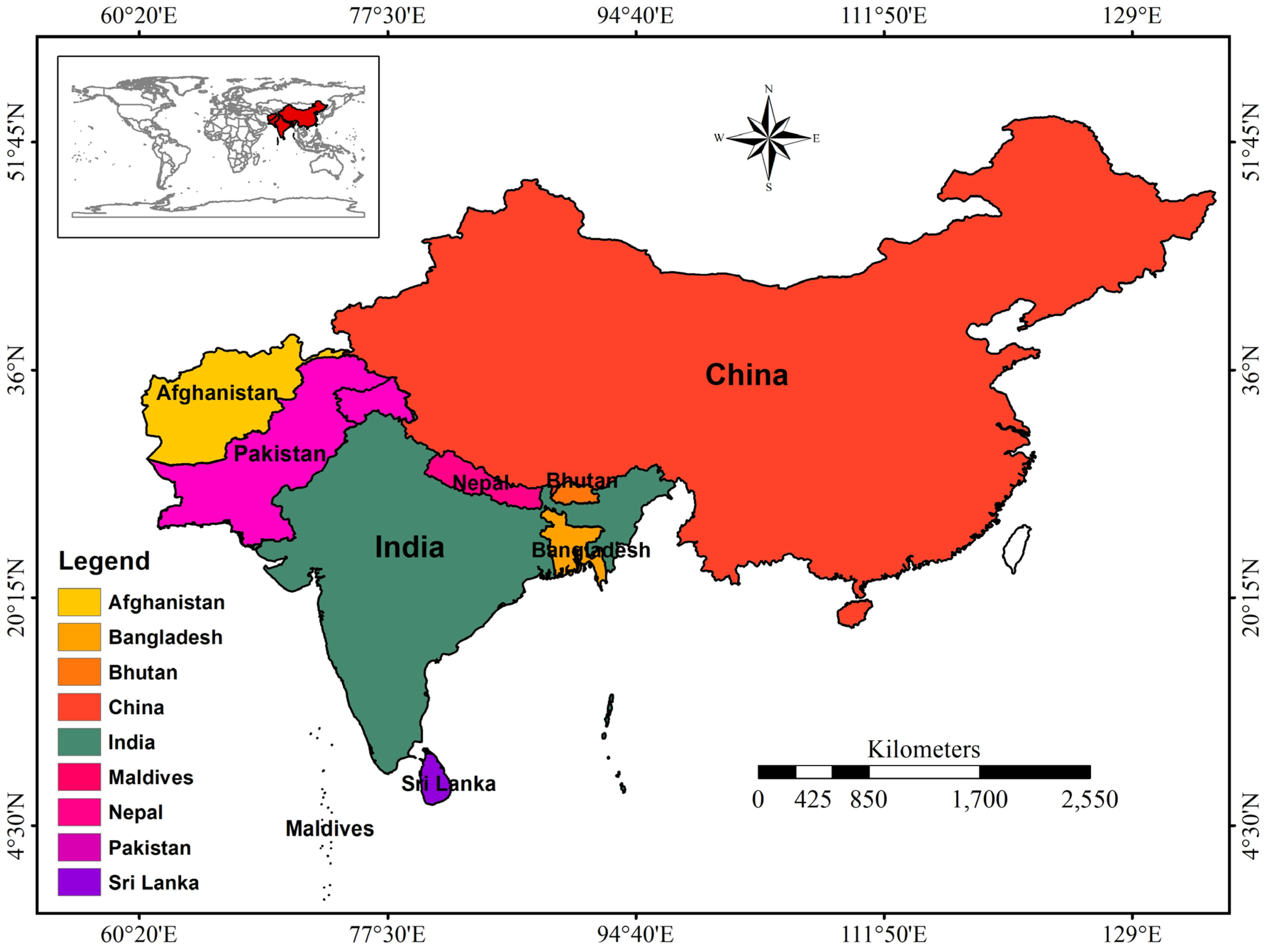
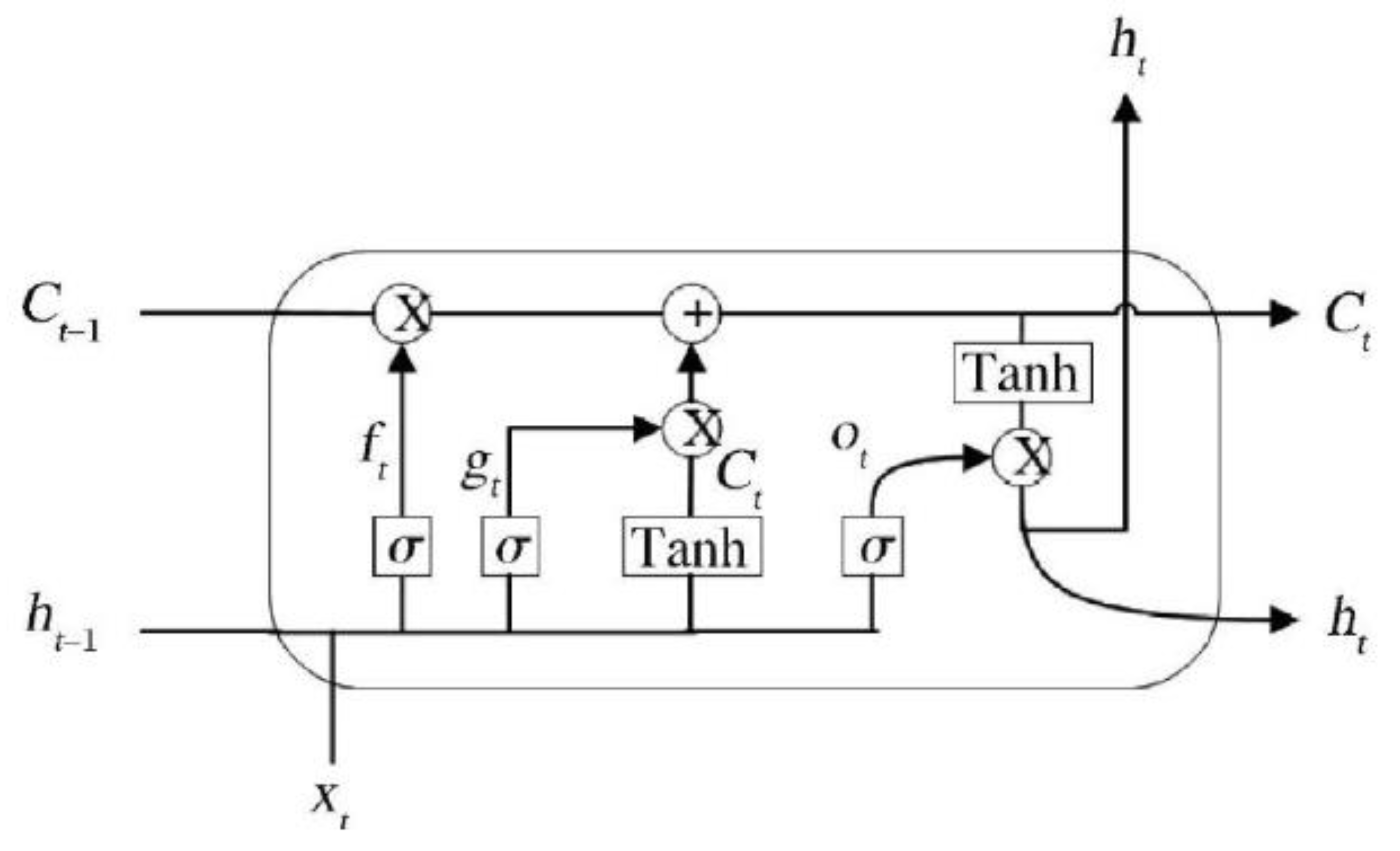
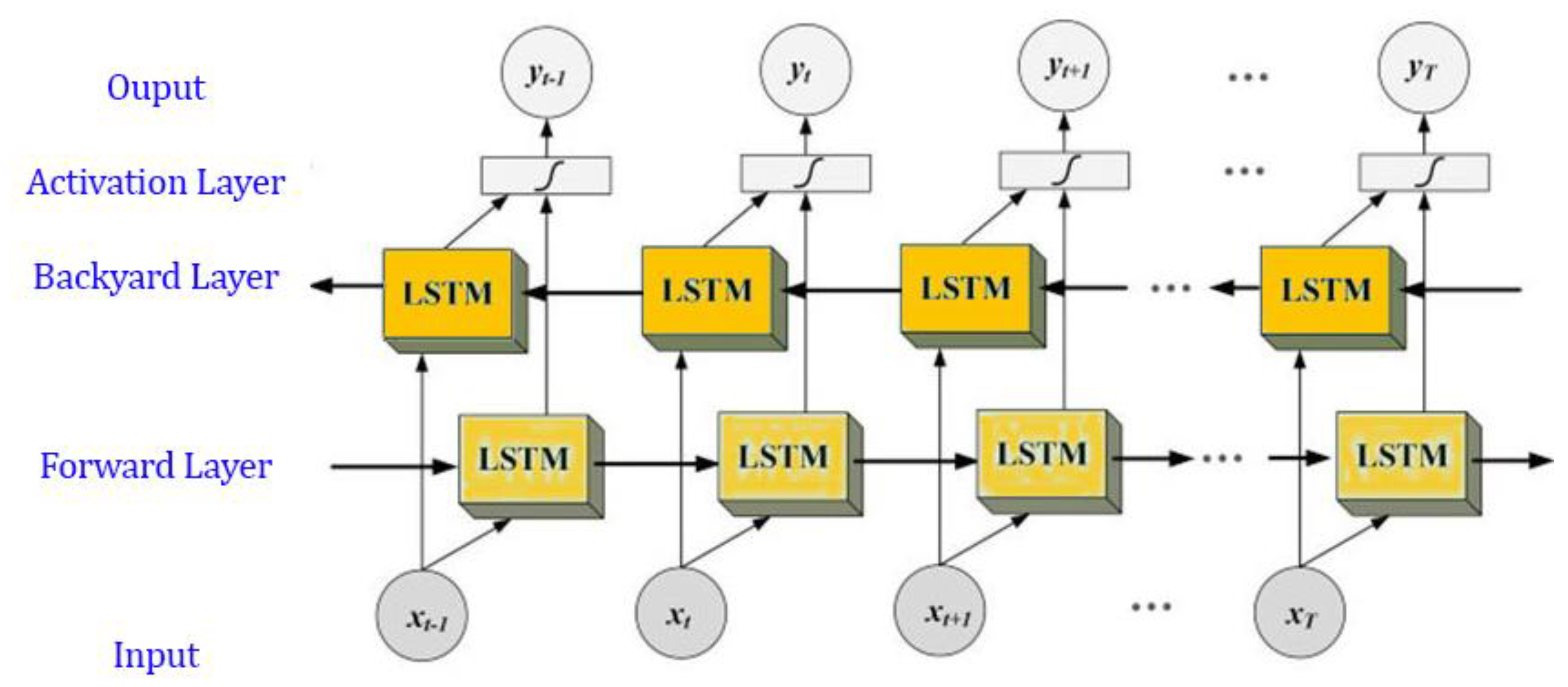

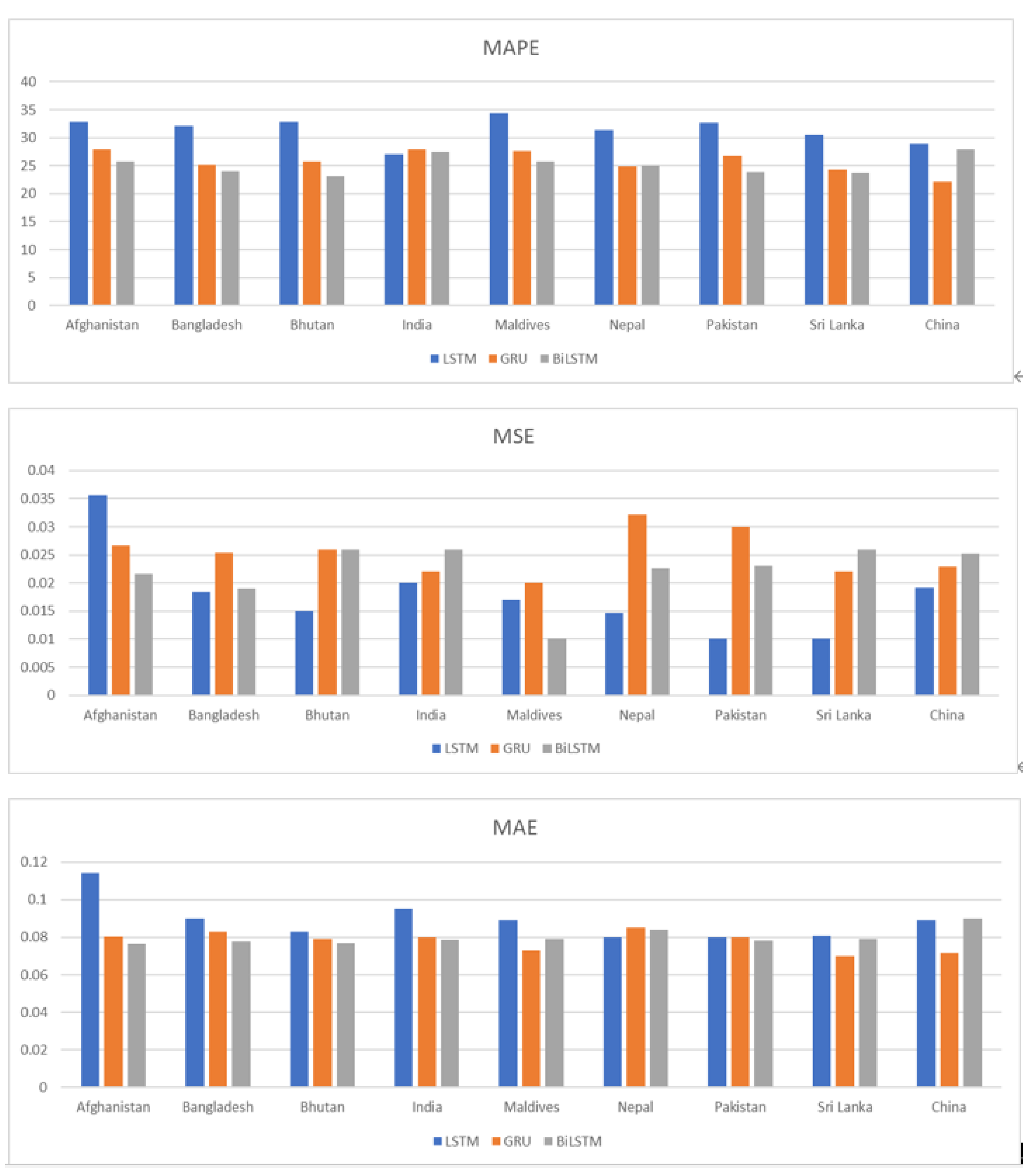
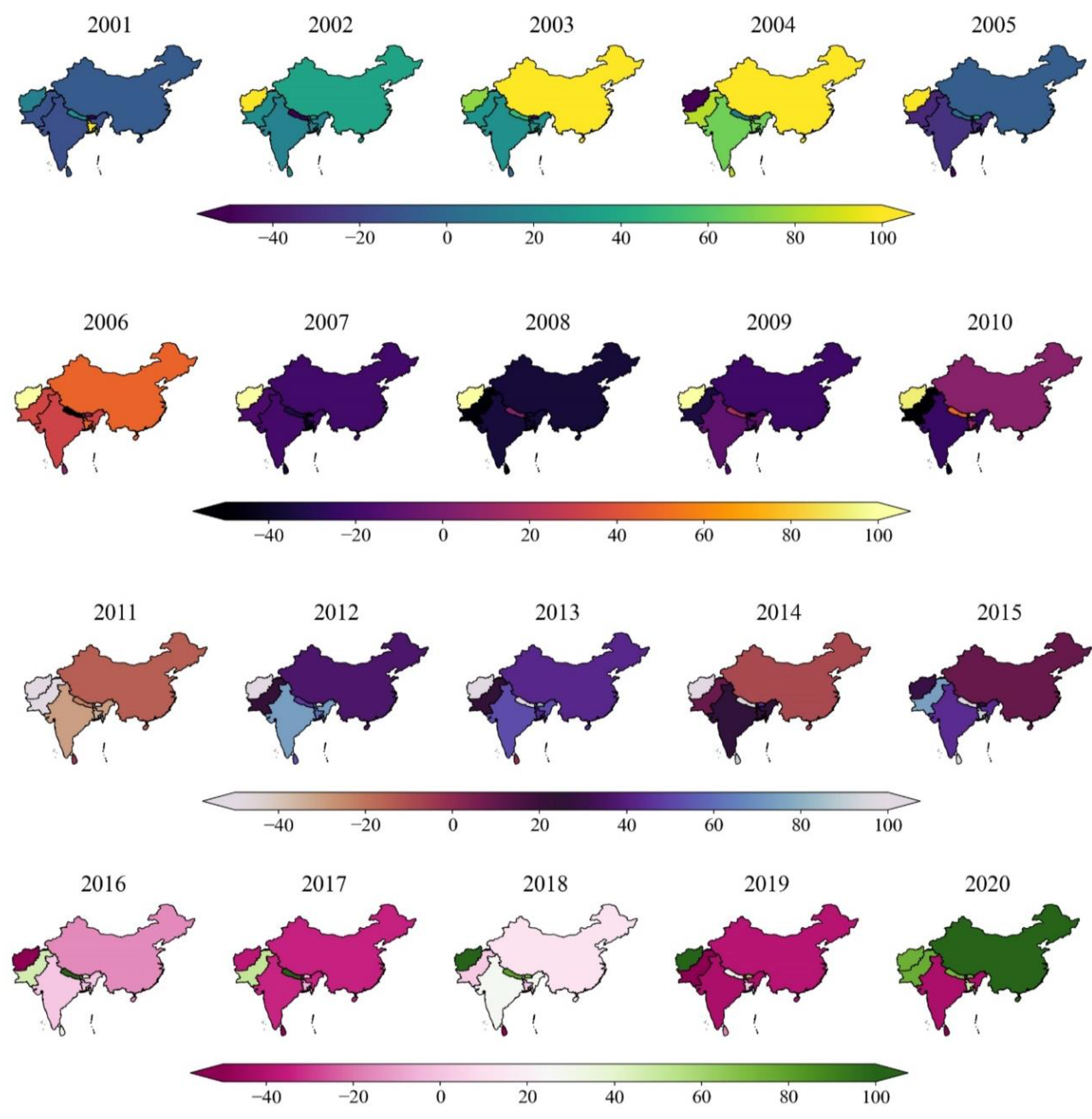
Publisher’s Note: MDPI stays neutral with regard to jurisdictional claims in published maps and institutional affiliations. |
© 2022 by the authors. Licensee MDPI, Basel, Switzerland. This article is an open access article distributed under the terms and conditions of the Creative Commons Attribution (CC BY) license (https://creativecommons.org/licenses/by/4.0/).
Share and Cite
Aamir, M.; Bhatti, M.A.; Bazai, S.U.; Marjan, S.; Mirza, A.M.; Wahid, A.; Hasnain, A.; Bhatti, U.A. Predicting the Environmental Change of Carbon Emission Patterns in South Asia: A Deep Learning Approach Using BiLSTM. Atmosphere 2022, 13, 2011. https://doi.org/10.3390/atmos13122011
Aamir M, Bhatti MA, Bazai SU, Marjan S, Mirza AM, Wahid A, Hasnain A, Bhatti UA. Predicting the Environmental Change of Carbon Emission Patterns in South Asia: A Deep Learning Approach Using BiLSTM. Atmosphere. 2022; 13(12):2011. https://doi.org/10.3390/atmos13122011
Chicago/Turabian StyleAamir, Muhammad, Mughair Aslam Bhatti, Sibghat Ullah Bazai, Shah Marjan, Aamir Mehmood Mirza, Abdul Wahid, Ahmad Hasnain, and Uzair Aslam Bhatti. 2022. "Predicting the Environmental Change of Carbon Emission Patterns in South Asia: A Deep Learning Approach Using BiLSTM" Atmosphere 13, no. 12: 2011. https://doi.org/10.3390/atmos13122011
APA StyleAamir, M., Bhatti, M. A., Bazai, S. U., Marjan, S., Mirza, A. M., Wahid, A., Hasnain, A., & Bhatti, U. A. (2022). Predicting the Environmental Change of Carbon Emission Patterns in South Asia: A Deep Learning Approach Using BiLSTM. Atmosphere, 13(12), 2011. https://doi.org/10.3390/atmos13122011












